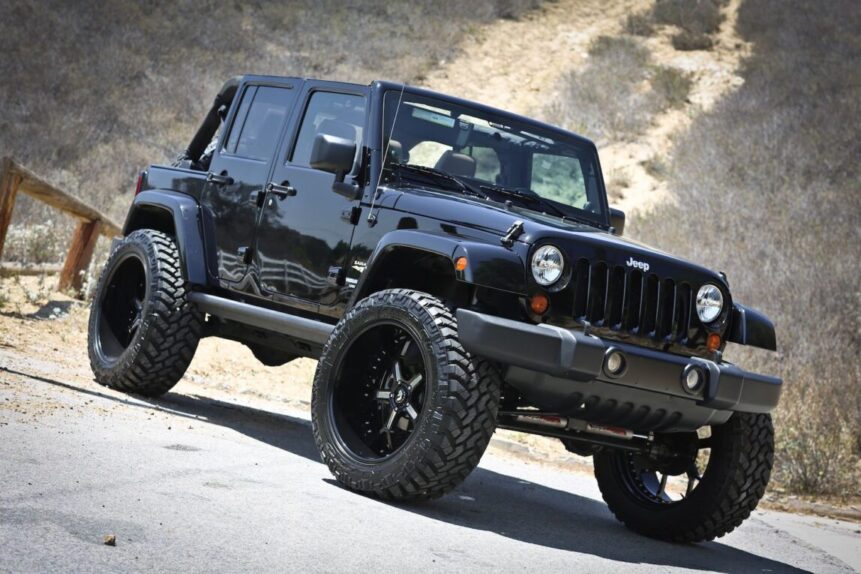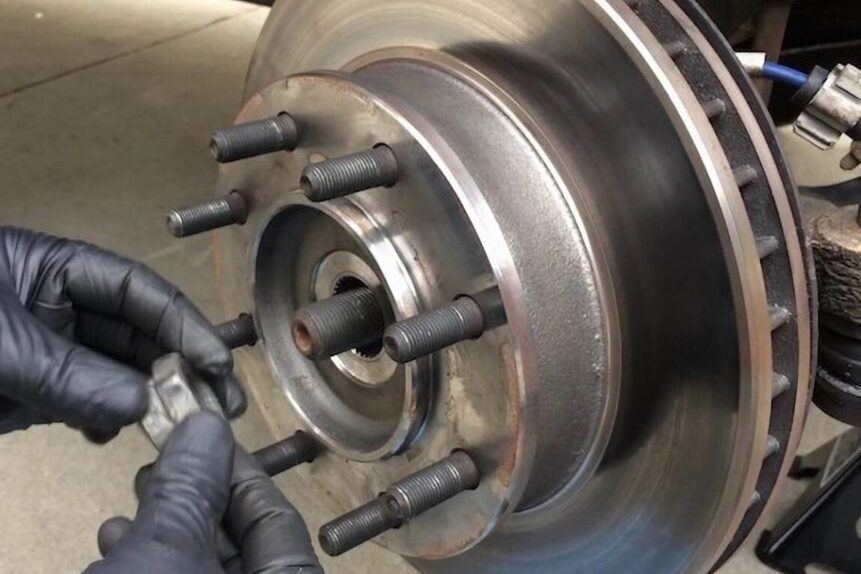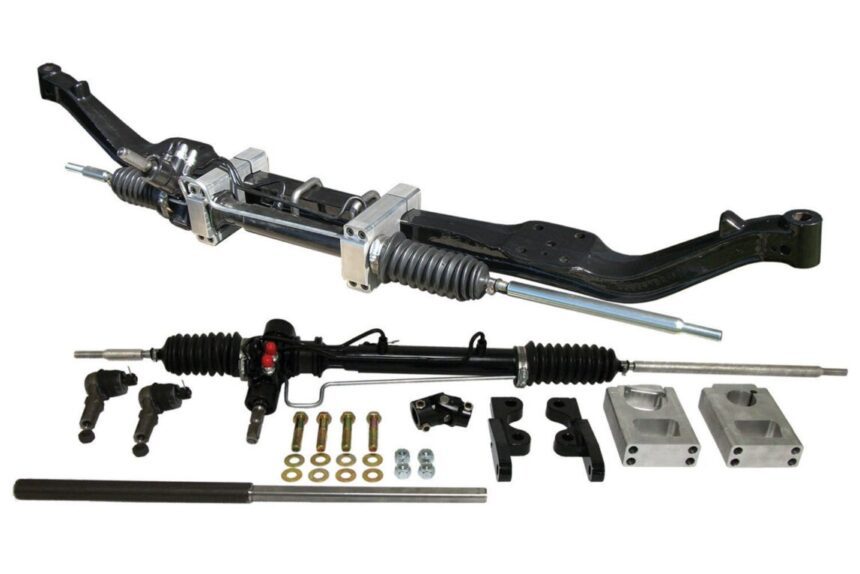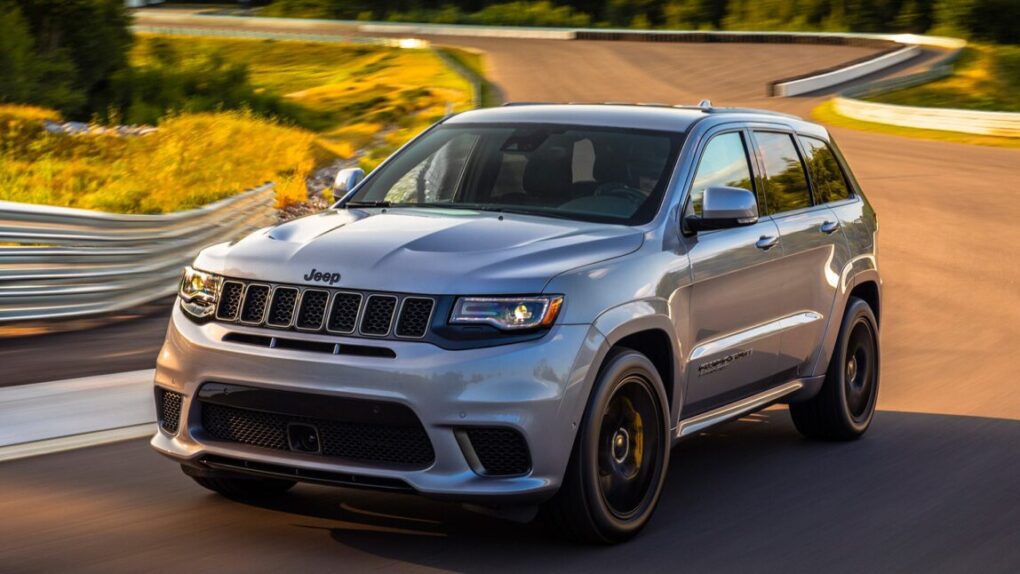Table Of Contents
- 1 Explanation of Death Wobble in Jeeps
- 2 Importance of addressing Death Wobble Jeep
- 3 Overview of the steps to fix Death Wobble Jeep
- 4 Causes of Death Wobble Jeep
- 5 Steps to Fix Death Wobble Jeep
- 6 DIY vs. Professional Fix of Death Wobble Jeep
- 7 How To Fix Death Wobble Jeep: FAQ
- 7.1 Q: How do I know if my Jeep has death wobble?
- 7.2 Q: Can death wobble cause damage to my Jeep?
- 7.3 Q: Can I still drive my Jeep with death wobble?
- 7.4 Q: How long does it take to fix death wobble?
- 7.5 Q: How much does it cost to fix death wobble?
- 7.6 Q: Can I prevent death wobble?
- 7.7 Q: What should I do if I still experience death wobble after repairs?
- 8 How To Fix Death Wobble Jeep: Conclusion
Explanation of Death Wobble in Jeeps
Death wobble is a phenomenon that occurs in Jeeps when the front suspension and steering components start to oscillate violently at high speeds, causing the vehicle to shake uncontrollably. It gets its name from the intense shaking that can make drivers feel like they’re going to crash or die.
Jeep death wobble is often caused by worn-out suspension or steering components that become loose or damaged over time, but other factors like tire balance or alignment can also contribute to the problem. It’s most common in Jeeps with solid front axles, like Wranglers or Cherokees, but can also affect other vehicles with similar designs.
How To Fix Death Wobble Jeep: Review
User response about this issue:
“I don’t have death wobble, but my factory ball-joints click and pop like crazy when turning, even after multiple rounds of tightening. Annoying as hell. I did have some shimmy for a while that I traced to the Synergy steering stabilizer relocation clamp being loose.
You need to be wary of Synergy somewhat. They didn’t change their tie-rods to account for the wider Rubicon axles and the adjusters hand at the outer limits of allowable length. Similar, I think they repurposed their JK aftermarket 1 and 5/8th clamp for the JL OEM tierod which is a metric diameter and marginally narrower. My clamp is 100% closed on both sides around the tierod. Hard to tell if it will move under load or not.
Synergy cut lots of corners on the JL.
Anyway, I think I’ll upgrade knuckle and ball joints at the same time if I ever get wobble. I hope my axle Cs don’t get damaged by these bad factory ball joints.”
Importance of addressing Death Wobble Jeep
It is crucial to address death wobble in your Jeep as soon as you notice it. Ignoring this issue can lead to serious safety risks, not only for yourself but also for other drivers on the road. Death wobble can cause your Jeep to vibrate violently and uncontrollably, making it difficult to maintain control of the vehicle.
The tumultuous tremors that result from the dreaded death wobble can lead to catastrophic consequences. The sheer force of the vibration can cause vital components of the steering and suspension systems to shatter or deteriorate, elevating the peril of a collision to unprecedented heights. Particularly at elevated velocities, the quivering sensation can intensify to an alarming degree, making it exceedingly arduous to retain control of the vehicle.
Furthermore, failure to rectify the root cause of the death wobble may trigger premature deterioration and disintegration of the Jeep’s tires, suspension, and steering mechanisms. Such undesirable outcomes can eventually culminate in exorbitant repair costs that could have been avoided.
It’s an absolute must to tackle death wobble head-on to ensure that you and your fellow road warriors are not put in harm’s way. Ignoring this potential disaster could be the beginning of the end for your Jeep, leading to even more extensive damage that’ll break the bank. So, let’s not take this issue lightly, as it could have dire consequences if left unaddressed.
Overview of the steps to fix Death Wobble Jeep
The steps to fix death wobble in Jeeps typically involve a combination of inspection, diagnosis, and repair or replacement of affected components. The process can be complex, and the specific steps will depend on the root cause of the problem, but generally involves:

1. Inspecting the vehicle for loose bolts and nuts.
2. Checking ball joints, tie rods, and wheel bearings for wear or damage.
3. Checking the steering system for misalignment.
4. Checking the steering stabilizer for damage.
5. Replacing worn-out or damaged components, like ball joints or tie rods.
6. Tightening loose steering components.
7. Aligning the steering system if necessary.
8. Installing a high-quality steering stabilizer to prevent future issues.
9. Regular maintenance and inspections to prevent death wobble from occurring again.
By following these steps, Jeep owners can address death wobble and ensure their vehicle is safe and reliable on the road.
Causes of Death Wobble Jeep
Jeep death wobble can be caused by various factors related to the suspension, steering, or tires and wheels. Here are some of the most common causes:
Suspension Issues of Jeep
Worn-out ball joints of Jeep
Ball joints are critical components that allow the suspension to move up and down while still providing a pivot point for the steering. Over time, the ball joints can wear out, causing play and looseness in the suspension that can lead to death wobble.
Damaged tie rods of Jeep
Tie rods are an essential component of your Jeep’s steering system. They connect the steering knuckle to the steering gear, allowing the wheels to turn left and right when you turn the steering wheel. If the tie rods become damaged, it can cause death wobble in your Jeep.
One common cause of damaged tie rods is off-road driving or hitting a large pothole or curb. When the tie rods are damaged, they can become loose or bent, causing your Jeep to shake and vibrate. This can be particularly noticeable when driving at higher speeds.
When attempting to diagnose the root cause of your Jeep’s death wobble, one possible culprit to investigate is the state of your tie rods. To determine whether or not your tie rods have been damaged, there are a few telltale signs to look for. One option is to take a close, careful look at the rods themselves, searching for any visible signs of wear and tear, like bends or cracks. Alternatively, you can try to provoke a response from the tie rods by manually turning the steering wheel back and forth while your Jeep is safely parked. If you detect any unnerving popping or clicking noises, or if you notice the steering wheel is loose or unresponsive, there’s a decent chance that your tie rods are damaged and contributing to the death wobble.
Aye, to patch up them busted tie rods, you gotta swap ’em out with some fresh ones. Don’t even think about DIYing this one, mate, ’cause it’s a complex job that calls for expert-level skills and equipment. But listen up, folks! You gotta act fast on this one to dodge any more damage to your precious Jeep and stay safe behind the wheel.
Worn-out wheel bearings of Jeep
Wheel bearings are an integral part of your Jeep’s suspension system, helping to reduce friction and support the weight of your vehicle. If your Jeep’s wheel bearings become worn out, it can contribute to death wobble.

In some cases, neglecting to maintain your Jeep’s wheel bearings can cause them to wear out and corrode. This could then result in heightened friction and wear, ultimately leading to a rattling or trembling in the wheels, especially when driving at higher speeds.
To check if your wheel bearings are worn out, you can jack up the Jeep and wiggle the wheels. If there is any play or movement in the wheels, it could be a sign of worn-out bearings. Additionally, you may hear a humming or grinding noise while driving, which can indicate that the bearings are damaged.
To fix worn-out wheel bearings, they will need to be replaced. This is typically a job best left to a professional mechanic, as it requires specialized tools and expertise. However, regular maintenance and inspection of your wheel bearings can help prevent them from becoming worn out in the first place.
It’s important to address worn-out wheel bearings promptly to prevent further damage to your Jeep’s suspension and ensure your safety on the road.
Steering Issues of Jeep
Loose steering components of Jeep
Loose steering components can contribute to death wobble in Jeeps. This can include components such as the steering gear, tie rods, and ball joints. When these components become loose, they can cause your steering to feel unstable and cause the wheels to wobble or shake.
One of the most common causes of loose steering components is wear and tear over time. The components can become damaged or worn down, leading to increased play in the steering. Additionally, off-roading and other rough driving conditions can put extra stress on the steering components, causing them to become loose.
When it comes to determining if you’ve got loose steering components, a DIY method is to recruit a pal and have them move the steering wheel back and forth while you scrutinize the various components for any suspicious movement or slop. If you observe any wobbling or play, it’s probable that your components are loose and in need of some serious tightening or even total replacement.

To fix loose steering components, the affected parts will need to be tightened or replaced. It’s important to have a professional mechanic perform this work, as improper tightening or replacement can cause further damage to your steering system.
Regular upkeep and monitoring of your steering components is crucial in preventing looseness. Keep an eye out for wear and tear like splitting and rust, and get any worn-out parts swapped out quickly.
Addressing loose steering components promptly can help prevent further damage to your Jeep’s suspension and ensure your safety on the road.
Misaligned Jeep steering system
Misalignment of the steering system can also cause death wobble. This can happen when the vehicle hits a curb or pothole or when the suspension is modified without adjusting the steering accordingly.
Damaged Jeep steering stabilizer
The steering stabilizer is a component that helps reduce vibration in the steering system. When it becomes damaged or worn, it can contribute to death wobble.
Tires and Wheels of Death Wobble Jeep
Out-of-balance Death Wobble Jeep tires
Out-of-balance tires are a common cause of death wobble in Jeeps. When a tire is out of balance, it means that one section of the tire is heavier than the other sections. This causes the tire to vibrate as it rotates, which can result in death wobble.
Tire balance is an important factor in ensuring a smooth ride and preventing issues like death wobble. Balancing a tire involves adding small weights to the rim of the tire to counterbalance any heavy spots. This ensures that the weight is evenly distributed around the tire, resulting in a smooth and vibration-free ride.
If you experience death wobble, it’s important to check the balance of your tires as part of the diagnosis process. If you find that your tires are out of balance, you can take them to a tire shop to have them balanced. This is a relatively quick and inexpensive fix that can help eliminate death wobble caused by out-of-balance tires.
Worn-out Death Wobble Jeep tires
Worn-out tires can also contribute to death wobble in Jeeps. Tires that are old or have worn unevenly can cause vibrations that can trigger death wobble.
Tires are supposed to be the unsung heroes of the road, keeping you stable, providing maximum traction and delivering the smooth ride you deserve. But as you continue to rely on them, the treads can take a beating and start to wear down, leaving them less capable of gripping the road and providing the stability you crave. Adding to the misery, tires are not immune to the whims of the road – hitting potholes, curbs, and other road hazards can twist and bend them out of shape, causing further wear and tear.
It’s important to regularly inspect your tires for signs of wear and damage. Look for uneven wear patterns, low tread depth, cracks or bulges on the sidewalls, or any other signs of damage. If you suspect that your tires may be contributing to death wobble, consider replacing them with new tires.
When replacing tires, it’s important to choose tires that are appropriate for your Jeep and your driving style. Look for tires that are designed for off-road use if you frequently take your Jeep off the pavement. In addition, consider the size and load rating of the tires to ensure that they can handle the weight and demands of your Jeep. Properly maintained and well-chosen tires can help prevent death wobble and provide a safe and smooth ride.
Bent Death Wobble Jeep wheels
Bent wheels can cause vibrations that can lead to death wobble, even if the tires are balanced correctly.
Jeep owners can wave goodbye to the dreaded death wobble by taking proactive steps and addressing the potential culprits. It’s vital to inspect and maintain the various components regularly, including the tie rods, wheel bearings, steering components, and tires. By doing so, drivers can ensure that everything is in top-notch condition and operating correctly to prevent the death wobble from rearing its ugly head in the future.
Steps to Fix Death Wobble Jeep
Fixing death wobble in a Jeep requires a systematic approach that involves inspecting and diagnosing the root cause of the problem, followed by the necessary repairs and replacements. Here are the steps to follow:
Inspection and Diagnosis of Death Wobble Jeep
1. Check for loose bolts and nuts: Inspect all bolts and nuts in the suspension and steering systems to ensure they are tight and secure.
2. Inspect ball joints, tie rods, and wheel bearings: Check for wear and damage to these critical components.
3. Check steering system for misalignment: Inspect the steering system for misalignment, which can cause death wobble.
4. Check steering stabilizer for damage: Inspect the steering stabilizer for damage, which can contribute to death wobble.
Repair and Replacement of Death Wobble Jeep
1.Replace worn-out ball joints, tie rods, and wheel bearings: If any of these components are worn or damaged, replace them immediately.
2.Tighten loose steering components: Tighten any loose bolts or nuts in the steering system, such as the track bar, drag link, or control arms.
3.Align steering system: If the steering system is misaligned, have it aligned by a professional mechanic.
4.Replace damaged steering stabilizer: If the steering stabilizer is damaged or worn, replace it with a new one.
5.Replace out-of-balance or worn-out tires: Replace any tires that are out of balance or worn out.
6.Replace bent wheels: If wheels are bent, replace them with new ones.
Preventative Measures for Death Wobble Jeep
1. Regular maintenance and inspections: Inspect and maintain the suspension and steering systems regularly to prevent death wobble from occurring in the future.
2. Upgrades to suspension and steering systems: Consider upgrading to high-quality suspension and steering components to improve performance and prevent death wobble.
3. Installation of a high-quality steering stabilizer: Install a high-quality steering stabilizer to reduce vibrations in the steering system and prevent death wobble.
By following these steps, Jeep owners can fix death wobble and prevent it from happening again in the future. It’s important to take this issue seriously and address it promptly to ensure the safety and reliability of the vehicle.
DIY vs. Professional Fix of Death Wobble Jeep
When it comes to fixing death wobble in a Jeep, Jeep owners have the option to either perform the repairs themselves or take their vehicle to a professional mechanic. Here are the pros and cons of each approach:
Pros and cons of DIY
Cost savings
One of the most significant advantages of a DIY approach is cost savings. By performing the repairs themselves, Jeep owners can avoid labor costs associated with taking their vehicle to a professional mechanic.
Limited expertise
A DIY approach may not be suitable for all Jeep owners, as it requires a certain level of mechanical knowledge and expertise. Those without experience may make mistakes or miss critical issues, leading to further damage or safety risks.
Time commitment
Fixing death wobble can be time-consuming, and a DIY approach may require more time than a professional repair. Jeep owners need to have the necessary time and patience to perform the repairs correctly.
Pros and cons of professional fix
1.Expertise and experience: Professional mechanics have the necessary expertise and experience to diagnose and repair death wobble effectively. They are also equipped with specialized tools and equipment, making repairs more efficient.
2. Higher cost: Professional repairs are often more expensive than a DIY approach due to labor costs and markups on parts.
3. Time savings: Professional repairs typically take less time than a DIY approach, as mechanics can quickly diagnose and repair issues.
Ultimately, the decision to perform a DIY repair or take the vehicle to a professional mechanic depends on the Jeep owner’s mechanical knowledge, expertise, and available time. While DIY repairs can save costs, it may not be the best approach for those without mechanical experience or those with time constraints. A professional repair may be more expensive, but it ensures proper diagnosis, repair, and safety.
How To Fix Death Wobble Jeep: FAQ
Q: How do I know if my Jeep has death wobble?
A: The most common symptom of death wobble is a violent shaking or wobbling of the steering wheel while driving at high speeds. This shaking can be so severe that it feels like the Jeep is out of control.
Q: Can death wobble cause damage to my Jeep?
A: Yes, death wobble can cause significant damage to the Jeep’s suspension, steering, and tires and wheels. Ignoring death wobble can lead to wear and tear on these components, resulting in costly repairs in the future.
Q: Can I still drive my Jeep with death wobble?
A: It is not recommended to drive your Jeep with death wobble. Doing so can be dangerous and put you and other drivers on the road at risk.
Q: How long does it take to fix death wobble?
A: The time it takes to fix death wobble depends on the severity of the issue and the approach taken to repair it. DIY repairs may take longer than a professional repair due to the expertise and specialized tools required.
Q: How much does it cost to fix death wobble?
A: The cost of fixing death wobble varies depending on the cause of the issue and the approach taken to repair it. DIY repairs are generally less expensive than professional repairs due to labor costs and markups on parts.
Q: Can I prevent death wobble?
A: Yes, regular maintenance and inspections of your Jeep’s suspension, steering, and tires and wheels can prevent death wobble. Upgrades to suspension and steering systems and installing a high-quality steering stabilizer can also help avoid future issues.
Q: What should I do if I still experience death wobble after repairs?
A: If you still experience death wobble after repairs, it may be necessary to have a professional mechanic re-diagnose the issue to ensure all damaged components have been properly repaired or replaced.
How To Fix Death Wobble Jeep: Conclusion
Death wobble in a Jeep is a severe issue that can cause significant safety risks if not addressed promptly. In this article, we have discussed the causes and steps to fix death wobble in a Jeep, as well as the pros and cons of a DIY approach versus a professional repair.
Recap of Death Wobble causes and fixes
We have identified three primary causes of death wobble: suspension issues, steering issues, and tires and wheels. The steps to fix death wobble involve inspecting and diagnosing the issue, repairing and replacing damaged components, and taking preventative measures to avoid future issues.
Importance of addressing Death Wobble promptly
It is essential to address death wobble promptly to avoid safety risks and further damage to the vehicle. Ignoring death wobble can cause wear and tear on the vehicle’s components, leading to costly repairs in the future.
Final thoughts and recommendations
Jeep owners should regularly inspect their vehicle’s suspension, steering, and tires and wheels to prevent death wobble. It is also recommended to perform upgrades to suspension and steering systems and install a high-quality steering stabilizer to avoid future issues.
In conclusion, Jeep owners should not ignore death wobble and must address it promptly by either performing a DIY repair or taking their vehicle to a professional mechanic. Taking care of your Jeep can ensure your safety on the road and prolong the life of your vehicle.


